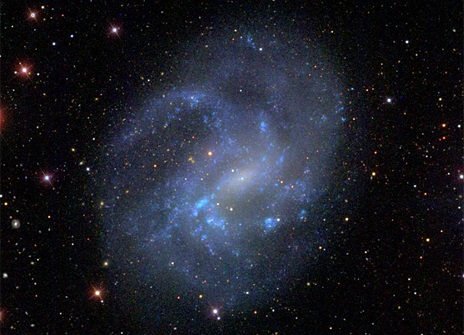January 8, 2014
By Eric Gershon
Dwarf galaxies may be small, but astronomers now know that they can hold massive black holes.
Yale astronomer Marla Geha and collaborators have identified more than 100 dwarf galaxies that show signs of hosting massive black holes, a discovery that challenges the idea that they exist only in much bigger galaxies.
"These galaxies are comparable in size to the Magellanic Clouds, dwarf satellite galaxies of the Milky Way,” said Geha, associate professor of astronomy. "Previously, such galaxies were thought to be too small to have such massive black holes.”
Dwarf galaxies are small, faint, low-mass galaxies with relatively few stars compared with, say, the Milky Way, Earth’s home galaxy. Black holes are points in space where matter is packed so densely that light itself cannot escape; massive black holes are an extreme form of black hole.
Geha and collaborators at the National Radio Astronomy Observatory (NRAO) and Princeton University presented their findings during the American Astronomical Society’s annual meeting in Washington, D.C., the week of Jan. 6. The work was highlighted during a Jan. 8 press conference.
The scientists said that patterns of light emission from many of the galaxies suggest the presence of massive black holes. The black holes in the study are about 100,000 times the mass of Earth’s Sun — massive, but vastly less dense than black holes seen in larger galaxies.
The research also offers new evidence for the origin of supermassive black holes, researchers said.
The team’s work is based on data from the Sloan Digital Sky Survey.
Amy Reines of NRAO is lead author of the team’s research paper, “Dwarf Galaxies with Optical Signatures of Active Massive Black Holes.” Jenny Greene of Princeton and Geha are co-authors. Further detail is also available on the NRAO website.















